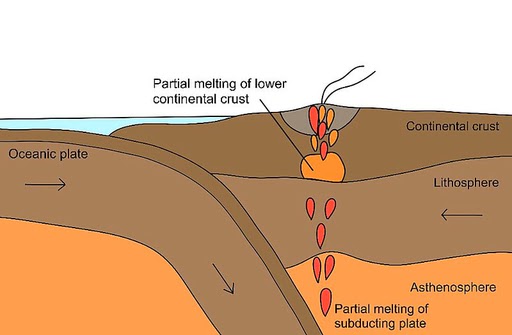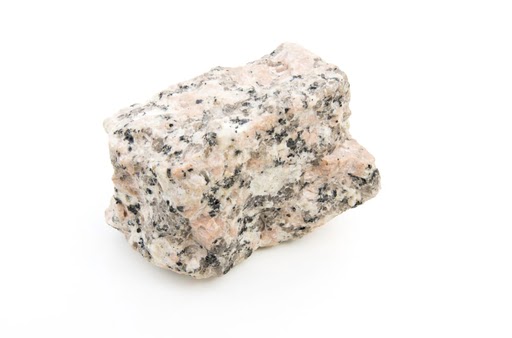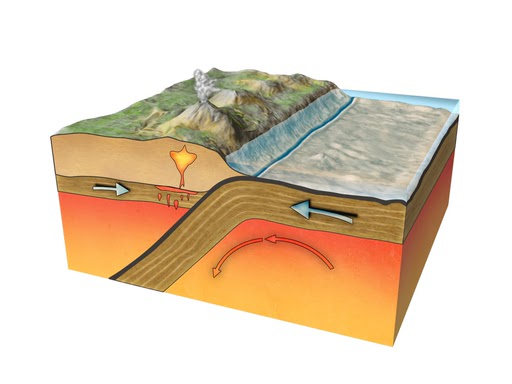Magma is formed deep within the Earth’s surface under extreme conditions of temperature and pressure. Different minerals have different melting points, leading to the formation of various rock compositions. The melting point of minerals increases with lithostatic pressure at greater depths.
Rocks are the fundamental building blocks of the Earth’s solid structure. We use different types of rocks and minerals in our daily lives, from generating electricity to constructing roads and buildings. Rocks are made up of clusters of several minerals. But how are these rocks formed? And how does their formation process get influenced by temperature and pressure?
Scientists now understand that rock melts and rises to the Earth’s surface from deep within the crust and mantle. While some magmas erupt and solidify on the surface, others cool and solidify before reaching the top. These processes are responsible for the creation of igneous rocks, which form through the cooling and solidification of magma.
The Formation of Magma and Its Location
Magma is found deep within the Earth’s layers. Under extremely high temperatures, rocks tend to melt. However, only a few rocks melt within a specific range due to variations in the melting points of the minerals present in the magma. This is known as partial melting, which causes changes in the composition of the magma as the temperature rises or cools.
 Diagram illustrating the process of Partial Melting (Photo Credit : Yansytang/ Wikimedia Commons)
Diagram illustrating the process of Partial Melting (Photo Credit : Yansytang/ Wikimedia Commons)
The pressure inside the Earth increases as we go deeper due to the weight of the overlying rocks. This increased pressure raises the melting temperature. Consequently, rocks that easily melt at the Earth’s surface would remain solid at greater depths. On the other hand, a decrease in lithostatic pressure allows rocks to melt at the appropriate temperature.
Mantle material moves towards the surface through convection currents within a specific temperature range. Convection currents are responsible for plate tectonic movement, driven by the continuous heating and cooling of the molten mantle. When the stress on solid rock falls below a critical threshold, it spontaneously melts without any additional heat input.
The phase known as decompression melting produces the most magma on Earth. Magma moves upward through the surrounding rock because solid rock is denser than molten rock. Small amounts of magma gather to form magma chambers.
The Variety of Rock Textures
Igneous rocks have textures that vary depending on the size of the mineral grains. These textures can be classified as coarse-grained (visible grains) and fine-grained (grains too small to be seen even under a microscope).
Geologists have observed that fine-grained or glassy rocks form when lava solidifies rapidly. In contrast, slower cooling of lava results in coarse-grained textures. This occurs because as crystallization progresses, the molecules in the molten state occupy specific positions and are no longer able to move within the developing crystal lattice.

Coarse- Grained Igneous Rock (Photo Credit : michal812/Shutterstock)
Initially, tiny crystals create a pattern. More atoms attach to these sites from the liquid that is crystallizing, causing the small grains to accumulate. For crystals to grow to a larger size, they require slow growth and the ability to fix themselves in the proper positions on a growing crystal. If a liquid freezes suddenly, such as when lava erupts onto the cold surface of the Earth, crystals cannot form. Instead, multiple small crystals begin to form simultaneously, resulting in a glassy appearance.
What Causes the Different Compositions of Igneous Rocks?
It is interesting to discover that a variety of rocks are formed by single-parent magma, but how does this happen? This occurs because different minerals within the molten magma solidify at different temperatures.
As the magma cools to a lower temperature range, minerals that crystallize at that temperature separate from the melt and influence its composition. Further cooling causes more grains to solidify, continuously changing the chemical makeup of the magma. This process of altering the chemistry of magma is known as Magmatic Differentiation.
What Role Does Plate Tectonics Play in Igneous Processes?
The formation of magma is connected to two major tectonic settings. Mid-oceanic ridges are formed when tectonic plates move apart and new ocean floors are created. The rising of molten rock to the sea floor when the plates separate results in massive volcanic eruptions, mostly of basalt.

Subduction Zone (Photo Credit : Andrea Danti/Shutterstock)
Secondly, there are subduction zones. These occur when two continental plates collide and one of the plates is oceanic. The oceanic lithosphere dives into the hot mantle and undergoes melting, producing magma with various compositions.
Mantle plumes are another location where large amounts of magma are generated. What sets them apart from other tectonic settings is that they do not occur along plate boundaries, but instead happen within lithospheric plates.
The geology of rock formations and the various processes that affect them are still subjects of extensive research. Fortunately, the mysteries of the Earth beneath us have answers for inquisitive minds… so why not continue to explore?
